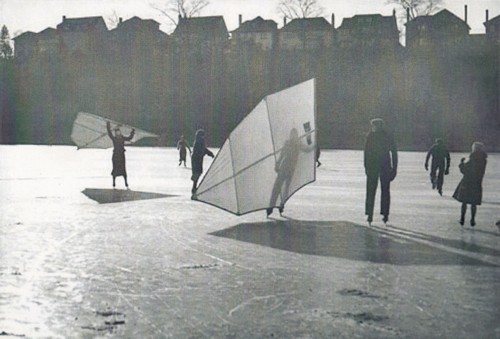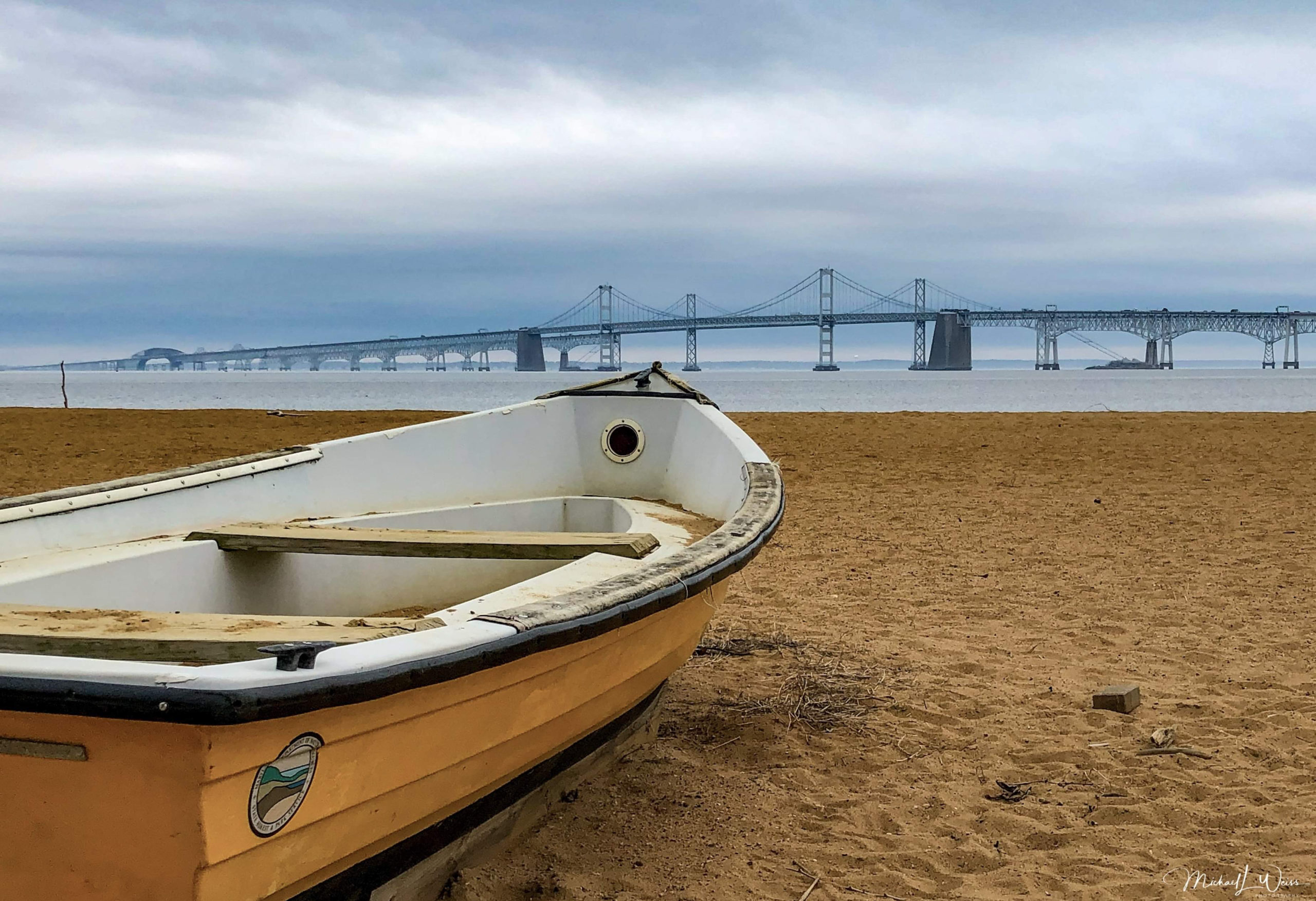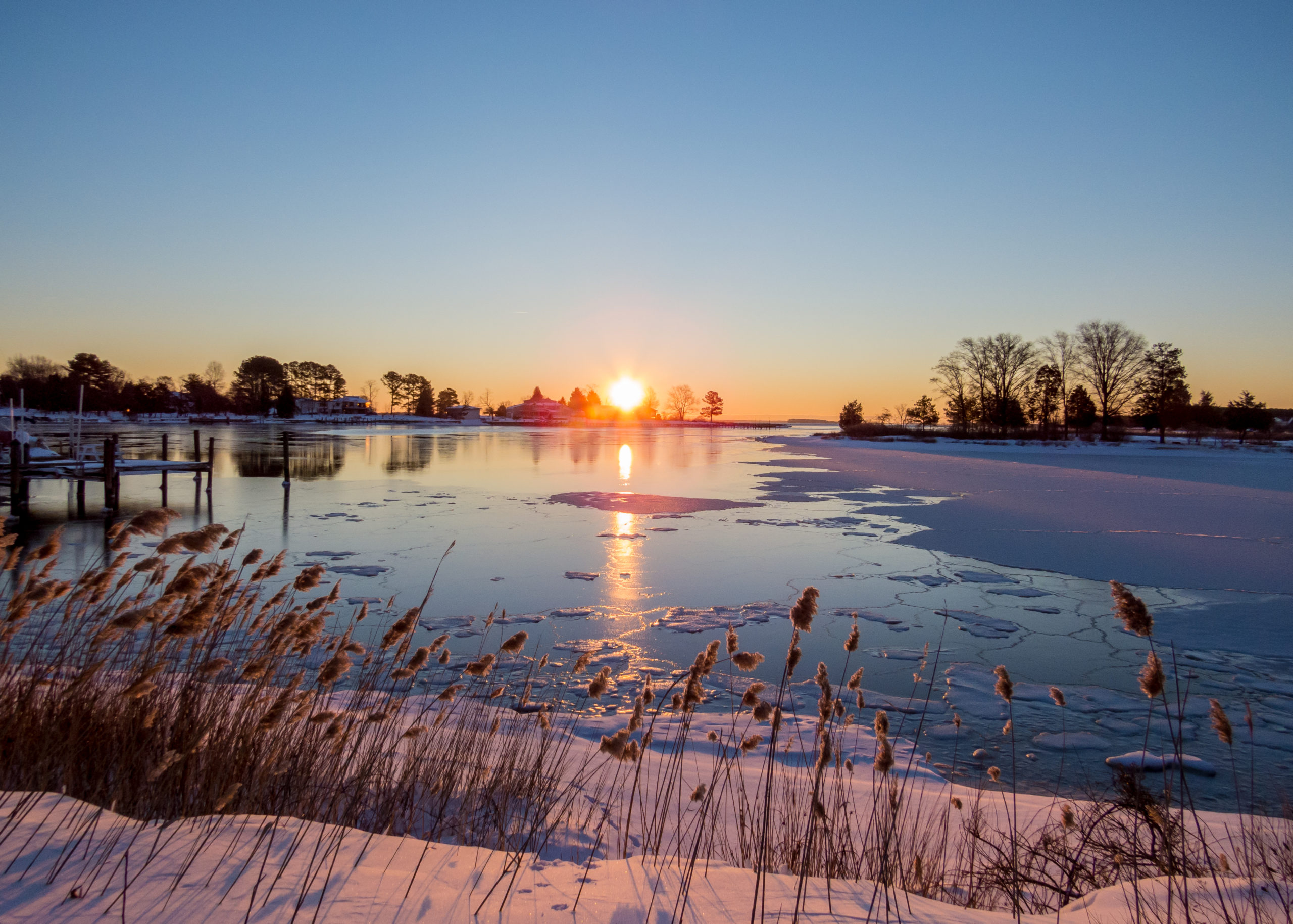Though a less common sight nowadays, there was a time when the fresher, shallower waters of the upper Bay froze over almost completely in the harsh cold of wintertime, effectively putting a halt to the fishing and oystering that so many watermen relied on for their livelihood. Indeed, the ice on the Susquehanna River’s surface became so thick that railroad tracks were laid down on its surface so passengers could travel from Havre de Grace to Perryville, Md. The railroad was referred to colloquially as the Cut, as it dipped down towards the water in a sort of gully.
Despite the frigid cold, the watermen survived those long, bitter months by ice fishing. They bored deep into the ice with iron augers—tedious and undoubtedly uncomfortable work, but it paid off. The men would precariously sled, skate or shuffle onto the icy surface, mindful of which areas were less solid. They often worked in close proximity to each other for safety’s sake.

After drilling a hole in a carefully chosen spot, the waiting game would begin. The fishermen waited for a strike, sitting with their line rigged and with enough food and rum to keep from losing their stamina. Catching a fish was often a matter of plain old luck with a good amount of patience and determination thrown in. Cutting a hole farther from shore where the water was deeper increased the chances of a catch—every Bay fisherman knows that the deepest water is also the warmest, and where the biggest stripers will linger. But moving so far from shore could be risky. On some days, the fish just wouldn’t bite, and a fisherman would have to lie down on the ice and check the hole to see if he could spot any fish. Having a couple of different holes to check from hour to hour upped the chances, but one had to be careful not to drill holes too close to one another.
If there weren’t any fish to catch, the watermen harvested the ice
itself, hauling it from nearby creeks and the Susquehanna and the Little Gunpowder rivers. Ice harvesting flourished from the mid-1800s into the early 20th century. Havre de Grace had many ice warehouses, where the ice was cut, stored and then delivered to Baltimore and the surrounding areas.
These days, the ice seldom gets in the way of midwinter boating, and fishermen don’t have to cut a hole to catch a few big stripers.




